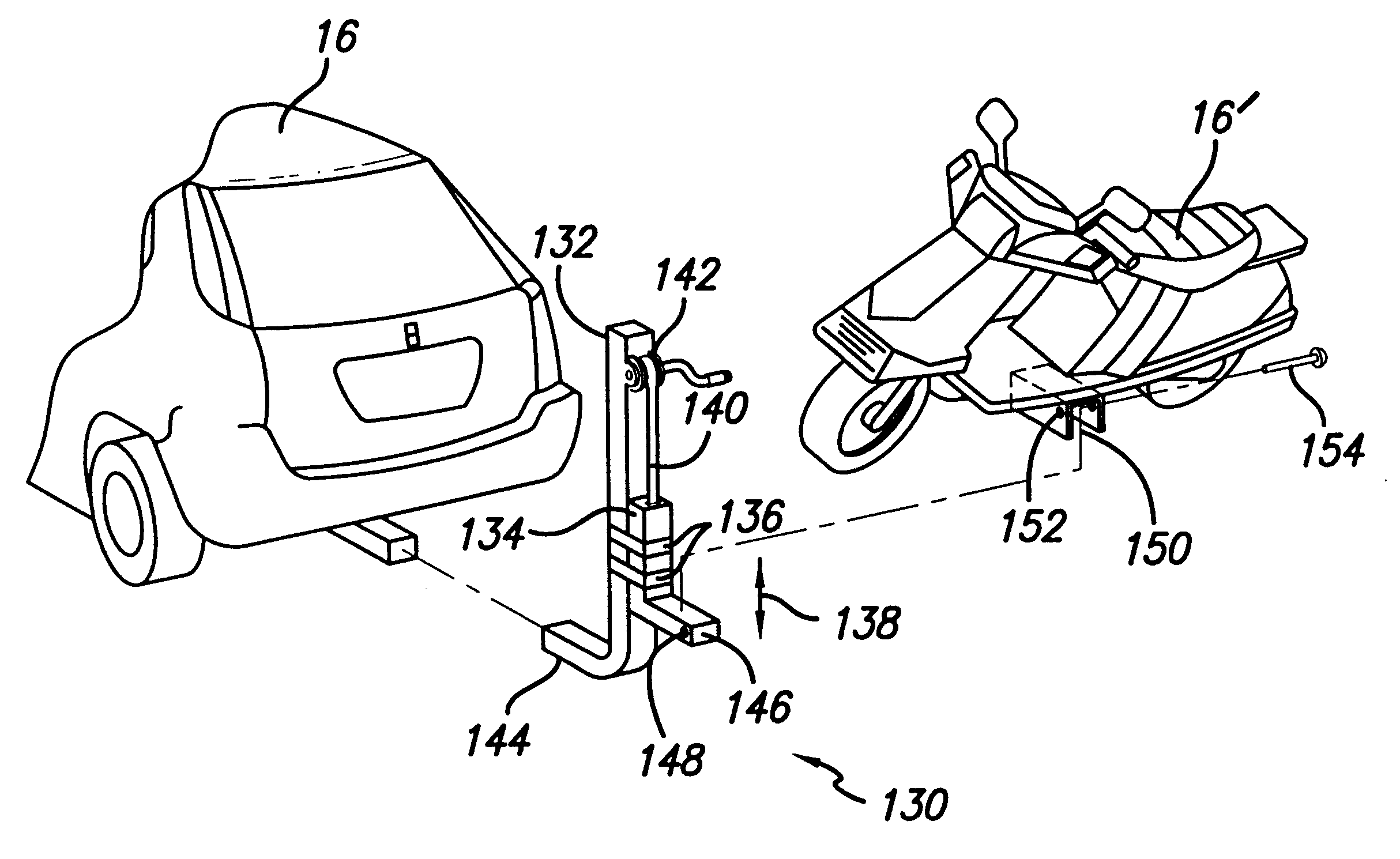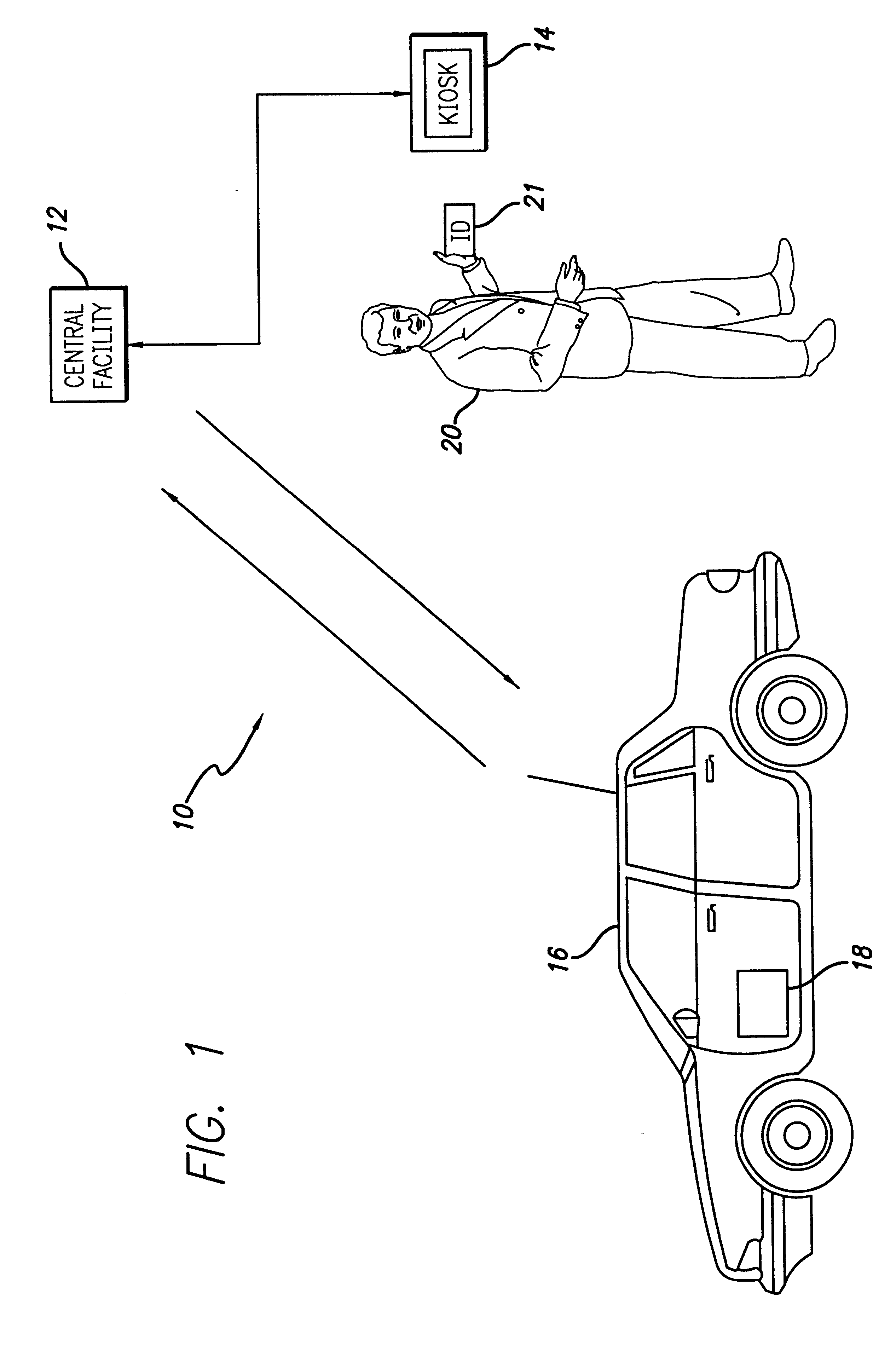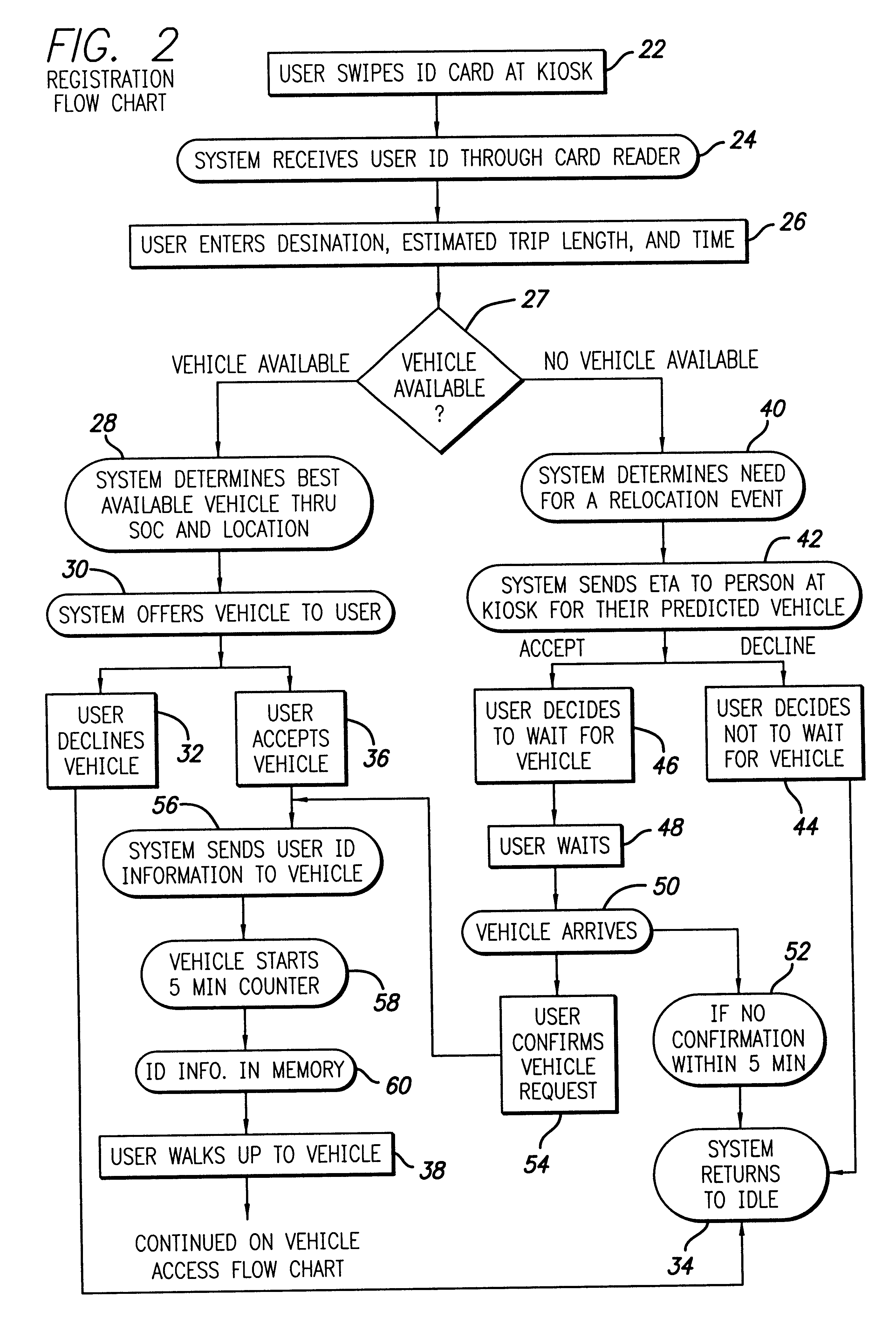Shared vehicle system and method with system for carrying a first vehicle with a second vehicle
a shared vehicle and vehicle technology, applied in the field of systems and methods for sharing a fleet of vehicles, can solve the problems of limiting travel with such systems, high traffic jams, and high demands for parking spaces, so as to maximize user convenience and minimize the number of vehicles required
- Summary
- Abstract
- Description
- Claims
- Application Information
AI Technical Summary
Benefits of technology
Problems solved by technology
Method used
Image
Examples
Embodiment Construction
In the following description of preferred embodiments, reference is made to the accompanying drawings which form a part hereof, and in which is shown by way of illustration a specific embodiment in which the invention may be practiced. It is to be understood that other embodiments may be utilized and structural changes may be made without departing from the scope of the preferred embodiments of the present invention.
The present invention relates, generally, to systems and methods for sharing a fleet of vehicles among a plurality of users, and various aspects of such systems and methods including optimizing vehicle allocation, vehicle tracking, security, and charging and managing of shared electric vehicles. As discussed above, in a shared vehicle system, a number of vehicles are normally maintained in several designated parking areas. Each user is allowed to pick up a vehicle at one parking area, and return the vehicle to the parking area nearest to the user's destination or return ...
PUM
 Login to View More
Login to View More Abstract
Description
Claims
Application Information
 Login to View More
Login to View More - R&D
- Intellectual Property
- Life Sciences
- Materials
- Tech Scout
- Unparalleled Data Quality
- Higher Quality Content
- 60% Fewer Hallucinations
Browse by: Latest US Patents, China's latest patents, Technical Efficacy Thesaurus, Application Domain, Technology Topic, Popular Technical Reports.
© 2025 PatSnap. All rights reserved.Legal|Privacy policy|Modern Slavery Act Transparency Statement|Sitemap|About US| Contact US: help@patsnap.com



